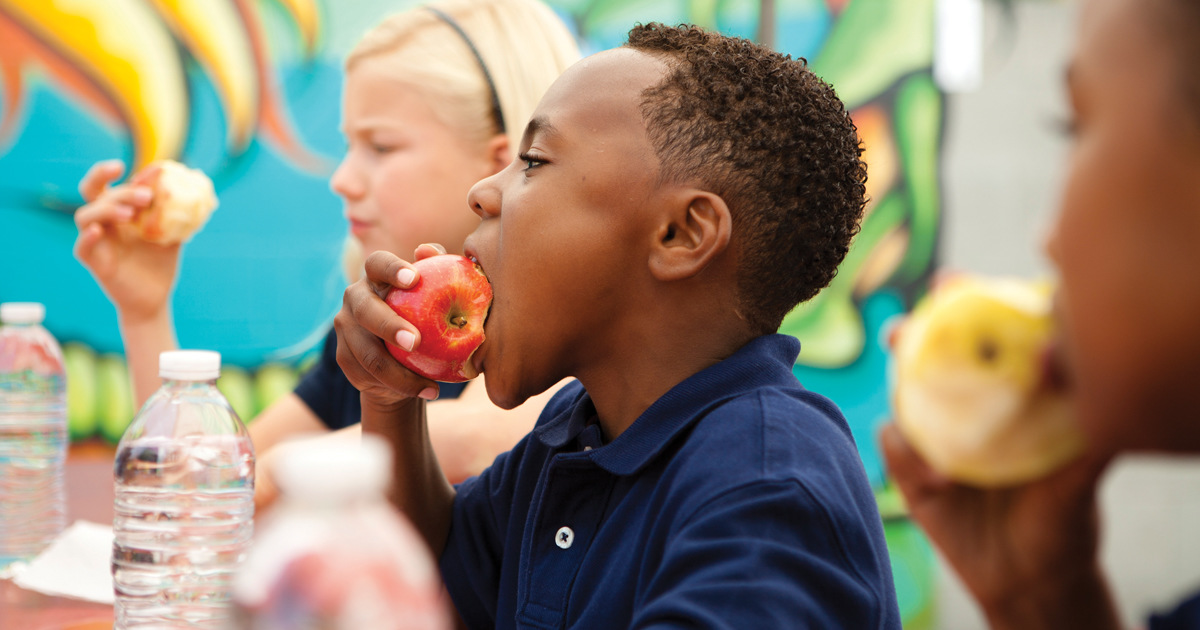The school cafeteria environment gives children the opportunity to expand their palate, sample unfamiliar foods and learn to make healthy food choices independently.
Recently implemented federal regulations now require cafeterias to offer more fruit, vegetables and whole grains, while limiting sodium, calories and unhealthy fats in school meals—aiding students in these decisions. If your child has the chance to make his or her own choices when it comes to buying lunch or snacks at school, it's important to talk about how to make the best choices possible. Let these suggestions help keep them on the right track.
Talk About It: Explain to your child that a balanced diet filled with fruits and vegetables is vital to her body's well-being. Have an age-appropriate discussion on the importance of nutrition and how her food choices affect how she feels throughout the day. Explain that a healthy lunch will give her more energy to play at recess and do well in class.
Plan Ahead: Review the school lunch menu with your child each week and discuss which foods and drinks are healthy, so he will know what to choose when purchasing lunch. For more information on the school meal program, check with the cafeteria manager or on the school's website. Many districts include a page listing of ingredients, nutritional facts, allergen information and more.
Lead the Way: The daily influence of a parent has more of an impact than many people realize. Studies have shown that young children's food preferences are significantly related to foods their mothers liked and disliked, and even those she never tasted. The more excitement parents express about fruits and vegetables, the more likely their children will want to eat them, too.
Arrange a Visit: The School Nutrition Association recommends parents have lunch with their child in the school cafeteria. This special one-on-one time allows moms and dads to spend extra time with their child, and encourage healthy food choices. Check with the principal or cafeteria manager first regarding visitor policies.
Keep It Up At Home: Kids who eat with their families are less likely to snack on unhealthy foods and more likely to eat fruits, vegetables and whole grains. Although it can be challenging with busy schedules, family mealtime is key to developing healthy habits. Also, lessen the temptation to reach for processed afterschool snacks by keeping healthy snacks such as fresh fruit and vegetables pre-washed, cut up and available for easy consumption.
Make It Fun: Healthy eating habits should be introduced and reinforced in creative and playful ways. For example, make a game out of consuming colorful fruits and vegetables daily. Encourage everyone in the family to "eat the rainbow" by consuming red, orange, yellow, green, blue or purple, and white or brown produce daily to win. After school, discuss who ate the most colorful lunch. Think of a fun prize for the family member who has the most wins at the end of the week or month. The United States Department of Agriculture Choose My Plate website is a great resource for games and activities that encourage healthy choices in a positive way that kids can understand.
Grace Derocha is a registered dietitian, certified diabetes educator and certified health coach with Blue Cross Blue Shield of Michigan. For more tips on how to live a healthier lifestyle, visit AHealthierMichigan.org.




